The Essential Guide to Rabbit Nesting Box Dimensions
Are you hoppy to start your own rabbit nest but don't know where to begin? Well, let's hop right into it! In this blog, we're going to share with you the essential guide to rabbit nesting box dimensions.

Key Takeaways:
- Understanding the correct rabbit nesting box dimensions is crucial for the comfort and safety of newborn rabbits.
- The size of the nest box varies depending on the breed of the rabbit, with larger breeds requiring more space.
- Proper materials and placement of the nest box are important to ensure the well-being of the nursing kits and the doe.
Rabbit breeding is a rewarding experience, but it requires attention to detail, especially when it comes to preparing for the arrival of newborn rabbits. One of the most critical aspects is providing a suitable nesting box. The dimensions of a rabbit nesting box are not a one-size-fits-all matter; they need to be tailored to the specific needs of your rabbit breed, ensuring comfort, safety, and easy access for the doe and her kits.
Understanding the Basics of Nest Box Size
When it comes to nest box size, the general rule is to provide enough room for the doe to comfortably lie down and nurse her kits without the risk of crushing them. For smaller breeds like the Netherland Dwarf, a nest box measuring around 12 inches in length, 10 inches in width, and 9 inches in height often suffices. On the other hand, larger breeds such as the Flemish Giant will require more substantial dimensions, typically around 18 inches in length, 12 inches in width, and 12 inches in height.
Material Matters: Choosing the Right Components
The materials used for constructing rabbit nest boxes can vary, but durability and safety are paramount. Many breeders opt for plywood due to its sturdiness and resistance to chewing. The interior should be lined with straw or hay to provide insulation, especially in colder weather. For the bottom, avoid using materials like metal or wire, as these can be uncomfortable and may harm the kits. Instead, a solid floor lined with bedding material is ideal.
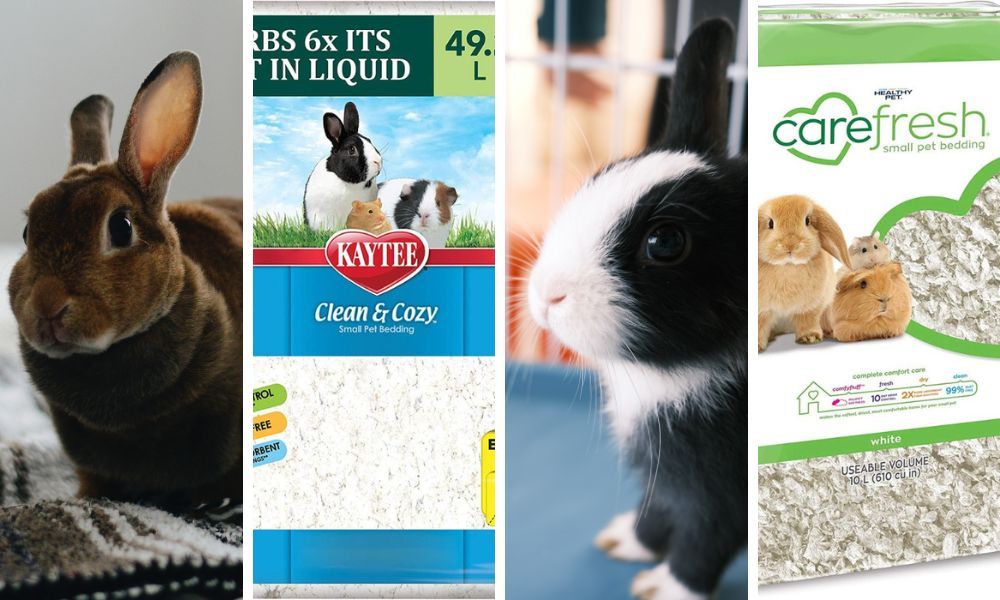
Tailoring to Breed Specifics
The rabbit nesting box dimensions should be tailored to accommodate the specific breed. Giant breeds need more space to move and nurse their kits, while smaller breeds may feel more secure in a cozier environment. For example, a Flemish Giant will need a larger box compared to a Netherland Dwarf, not only due to size but also because they tend to have larger litters.
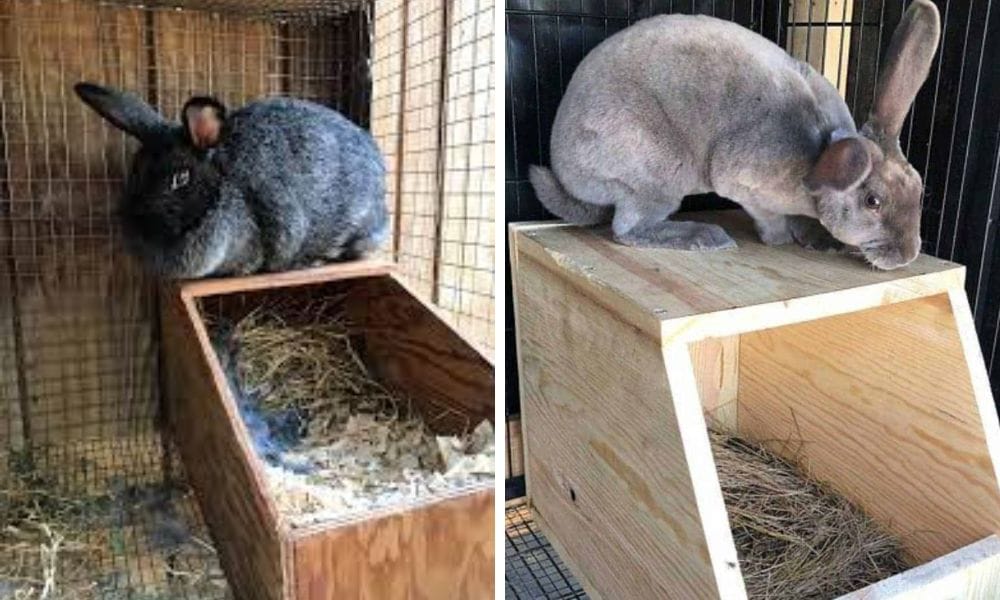
Optimizing Nest Box Placement
When it comes to setting up a rabbit nest box, placement is just as crucial as the dimensions and materials used. Ideally, the nest box should be placed in a quiet corner of the rabbit's living area to provide a sense of security and tranquility for the mother. If you're using cages with welded wire or hardware cloth, ensure that the nest box is securely attached to avoid any shifting that could disturb the mother and her litter. The goal is to create a stable and serene environment that mimics the natural burrowing instincts of rabbits. If you want to find out more abour rabbit breeding boxes we have put together our blog below,
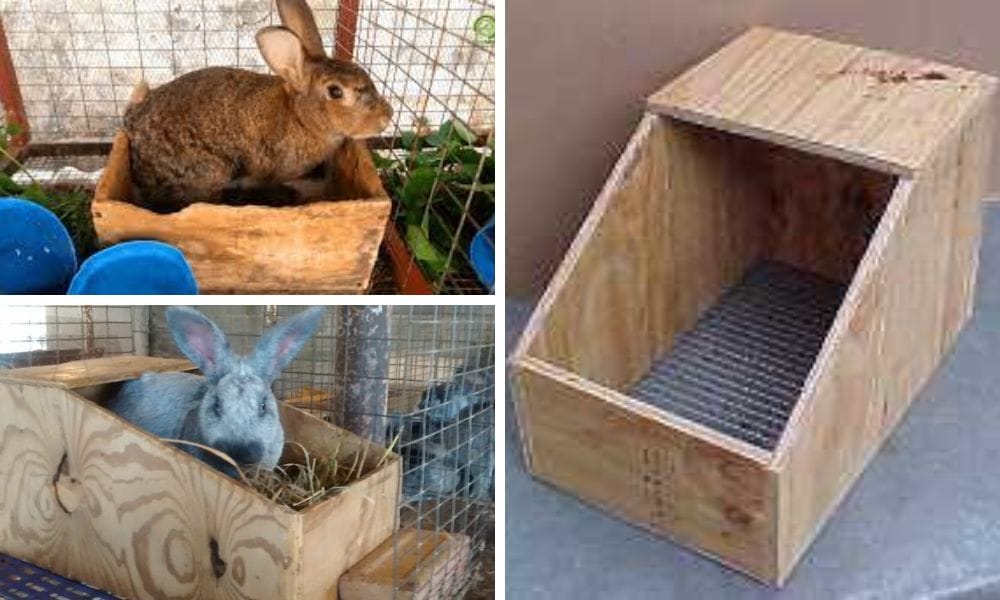
Moreover, the height at which the nest box is placed can significantly affect the accessibility for both the doe and her kits. Hanging the box at a level that is too high can be a challenge for the young to reach, while placing it directly on the ground might make it susceptible to dampness and cold drafts. A shelf or a raised platform can be a perfect solution, allowing the box to be elevated just enough to keep it dry and at a comfortable height for the rabbit family. Remember to line the shelf with a soft material like cardboard to prevent the rabbits from chewing on the wood or wire.
Creating a Cozy Interior
The interior of the rabbit nest box should be designed to maximize comfort and encourage the doe to settle in. One way to achieve this is by lining the bottom of the box with a layer of cardboard before adding the nesting materials. Cardboard not only provides a soft base but also helps to insulate the nest, keeping the kits warm. On top of the cardboard, you can fill the box with a generous amount of hay or straw, which the doe will arrange to her liking. This layering technique ensures that the nest is cozy and free from drafts.
Additionally, it's important to consider the materials that rabbits might chew on. While wood is a common choice for the structure of the nest box, it's essential to cover any exposed edges with a chew-proof material like hardware cloth to prevent the rabbits from gnawing on them. This not only protects the structure of the box but also ensures the safety of the rabbits, as ingesting wood splinters can be harmful. By creating a chew-free and snug interior, you provide a nurturing environment for the doe to care for her litter. Want to know more about rabbit nest, you can find all details in our blog below.
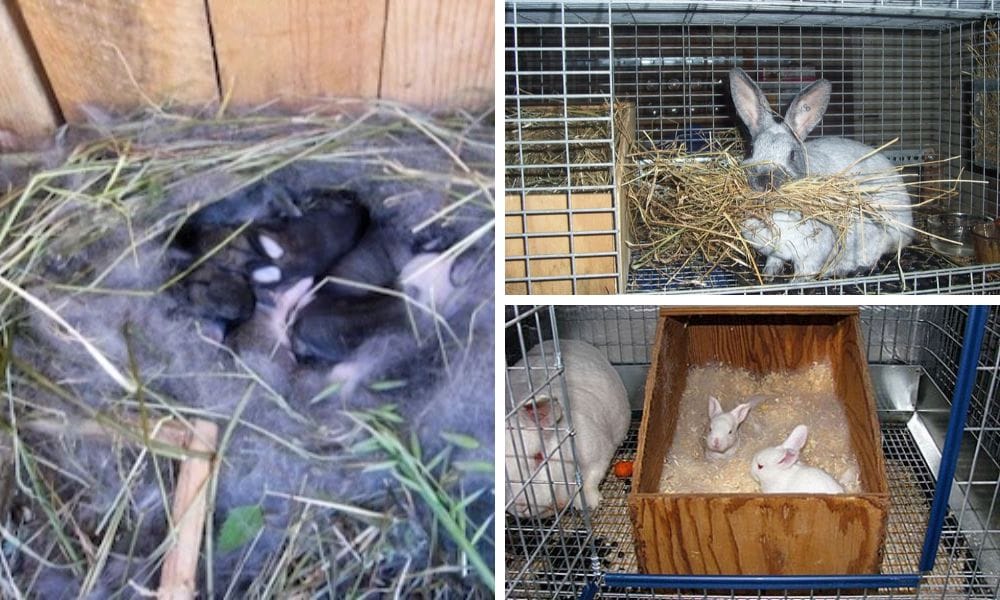
Climate Considerations for Nest Boxes
In cold climates, the nest box should have only the bottom open for contact with the doe's fur-lined bedding, which helps retain heat. In contrast, warmer climates may require a more open design to prevent overheating. Regardless of the climate, the box should be placed in a sheltered area of the cage to protect the kits from drafts.
Age-Appropriate Adjustments
As young rabbits grow, their space requirements change. Older kits will need more room to move around, so it's important to have a nest box that can accommodate this growth. Some breeders use adjustable or removable partitions to increase space as the kits develop.
The Importance of Easy Access
Easy access is crucial for both the doe and her caretaker. The entrance to the nest box should be low enough for the doe to hop in and out without difficulty, but high enough to prevent the kits from wandering out before they are ready. A lip of about 4 inches usually works well.
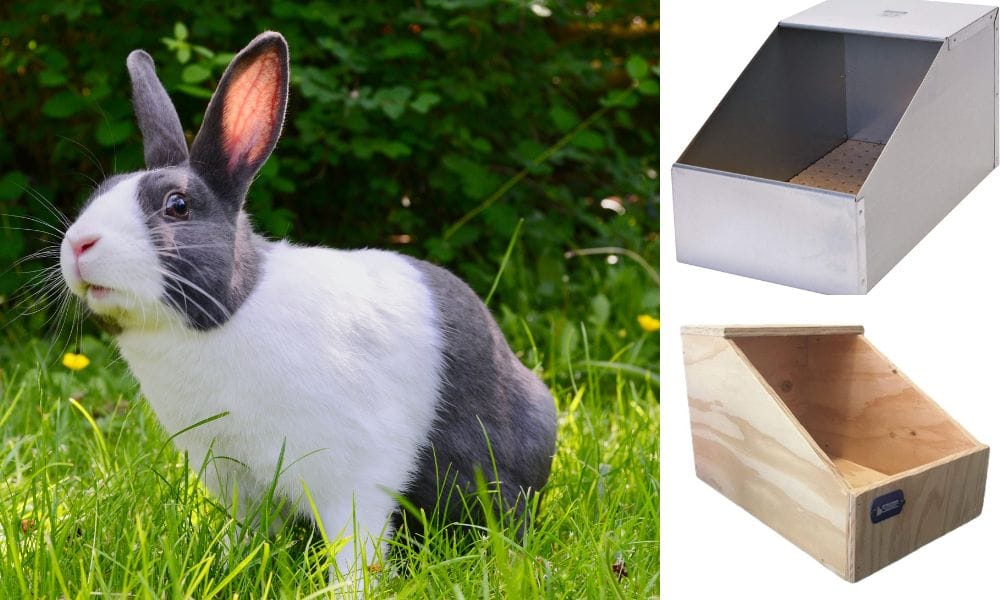
Safety and Security Features
Safety is a top priority when it comes to rabbit nest boxes. The box should be secure within the cage to prevent tipping or moving, which could endanger the kits. Additionally, the lid should be secure but easily accessible for the breeder to check on the babies and clean the box as needed.
Summary
Rabbit nesting box dimensions are a key factor in successful rabbit breeding. The right size and material ensure the comfort and safety of both the doe and her newborn rabbits. By considering the breed, climate, and growth of the kits, breeders can provide an optimal environment for nursing kits. Remember to keep the box secure, easily accessible, and lined with appropriate bedding to create a nurturing space for the young rabbits.
FAQ Section
Q: What are the ideal dimensions for a rabbit nesting box? A: Ideal dimensions vary by breed. Smaller breeds like the Netherland Dwarf may need a box around 12"x10"x9", while larger breeds like the Flemish Giant require larger boxes, approximately 18"x12"x12".
Q: How do I adjust the nest box for colder weather? A: In colder weather, ensure the nest box is well-insulated with straw or hay and has only the bottom open to maintain warmth. The box should also be placed in a sheltered area of the cage.
Q: When should I provide a nesting box for my pregnant doe? A: A nesting box should be provided to the pregnant doe about a week before the expected kindling date to allow her time to get accustomed to it and prepare it for the arrival of her kits.

